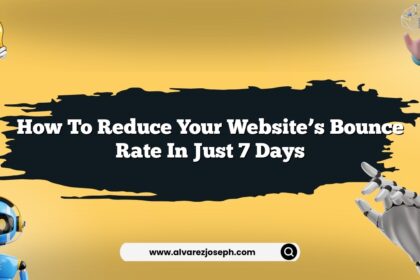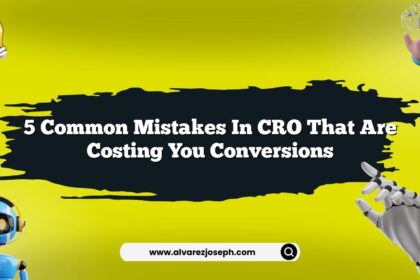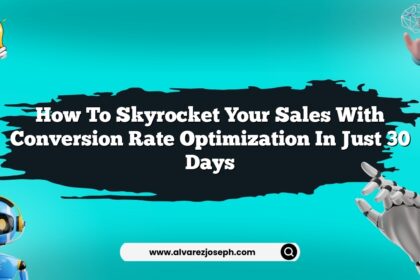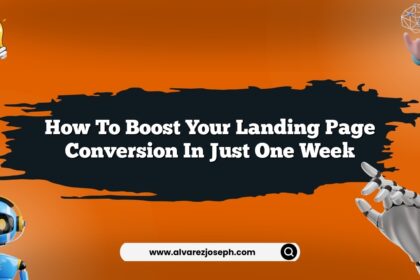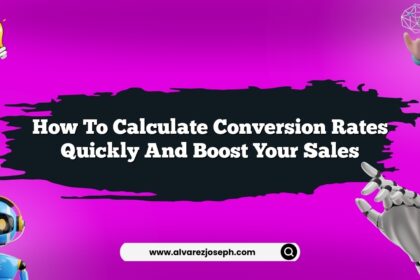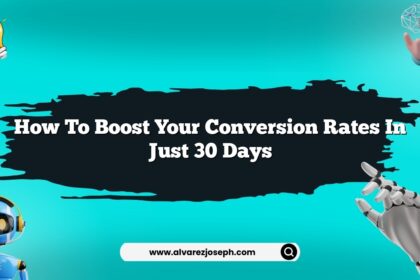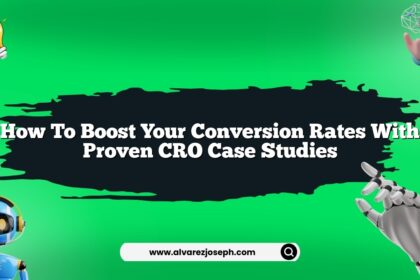Imagine waking up one morning and checking your online store; your conversion rates have skyrocketed overnight. Sounds like a dream, right? Well, guess what? It’s not just a fantasy! You can absolutely boost your conversion rates within 30 days using analytics. For real—this isn’t some pie-in-the-sky idea.
Hold on tight because I’m about to throw some serious knowledge your way. If you commit to diving into your data, you’ll be amazed at what you can uncover. Analytics is like a crystal ball that shows you what’s working and what’s not. Let’s not kid ourselves; ignoring analytics is like sailing a ship without a compass. You’ll just drift aimlessly, hoping for the best.
Understanding Your Traffic Sources
First things first, let’s talk about traffic sources. You can’t improve what you can’t measure… so where are your visitors coming from?
- Is it organic search?
- Social media?
- Paid ads?
- Or maybe some random referral site?
Here’s the deal: you need to know where your money and energy are best spent. If you find out that most of your traffic comes from organic search, it’s time to double down on your SEO strategies. Conversely, if paid ads are bringing in the bucks but not converting, then it might be time to rethink that approach.
Tip: Use tools like Google Analytics to break down your traffic sources. You’ll find insights that can help you make informed decisions.
Analyze User Behavior
Next up, let’s get into user behavior. What’s the point of getting traffic if no one sticks around or, worse, converts?
- What pages are people bouncing from?
- Where are they spending the most time?
- What’s the path they take before conversion?
When I started digging into user behavior, it was like uncovering buried treasure. I spotted certain pages that were supposed to be high-converting but had crazy high bounce rates.
Pro Tip: Set up Google Analytics goals. This helps you track user actions that matter, like completing a purchase or signing up for a newsletter.
Optimize Your Landing Pages
Let’s shift gears a bit. Landing pages are often the unsung heroes of conversion rate optimization. A killer landing page can do wonders, but let’s face it, a mediocre one can kill your conversions faster than you can say "abandon cart."
Here’s what I’ve learned about landing pages:
- Clarity is key. Your value proposition should be clear. If visitors can’t tell what you’re offering in a few seconds, they’re out.
- Visuals matter. A picture is worth a thousand words, but poor-quality images can send visitors running. Use high-quality visuals that resonate with your audience.
- Call-to-Action (CTA). Your CTA should be impossible to ignore but not in a sleazy way. Say something like “Grab Your Deal!” instead of the boring old “Submit.”
Here’s a little secret: A/B testing your landing pages can reveal what resonates best with your audience.
A/B Testing Basics
Okay, A/B testing can sound intimidating, but it’s not… Trust me. Here’s how to get started:
- Pick one element to test. It could be your CTA button color, the headline, or even the images you use.
- Split your traffic. Send half the visitors to version A and half to version B.
- Analyze the results. See which version performs better.
- Implement the winning version and rinse and repeat!
This process can feel a bit like trial and error, but it’s worth it when you see those conversion rates climb.
The Checkout Process
Let’s talk about one of the most critical areas: the checkout process. If your checkout isn’t streamlined, you can say goodbye to many potential sales. If your checkout looks like a maze, people are going to abandon their carts faster than you can say “where did they go?”
- Simplify the process. Reduce the number of steps.
- Offer guest checkout. Not everyone wants to create an account just to buy a t-shirt.
- Provide clear shipping information. Don’t make customers hunt for shipping costs.
Here’s a funny story: I once abandoned a cart because it took longer to fill out the checkout than it did to decide what I wanted to buy. Talk about frustrating!
Mobile Optimization
Now, let’s not forget about mobile users. If your site isn’t mobile-friendly, you’re shooting yourself in the foot.
- Mobile traffic is booming. If your site isn’t optimized, you’re losing out big time.
- Test your site on various devices. If you find things that look wonky, fix them!
Also, consider how your buttons are sized and spaced. People shouldn’t have to play a game of “pinch and zoom” just to click a button.
Social Proof
People love to see what others think. That’s where social proof comes in. Adding testimonials, reviews, and ratings can make a world of difference.
- Create a testimonials page or sprinkle them throughout your site.
- Use review platforms like Trustpilot or Yelp.
Here’s the kicker: Social proof helps eliminate doubts. When people see that others have had a positive experience, they’re more likely to trust you.
Retargeting
Ever wondered about those ads that seem to follow you around? That’s retargeting at work! It’s a powerful tool to bring back visitors who didn’t convert the first time.
- Use platforms like Google Ads or Facebook Ads to set up retargeting campaigns.
- Remind visitors about products they looked at, or offer a discount to entice them back.
I can’t tell you how many times I’ve gone back to a site just because they reminded me about the cute shoes I was eyeing.
Analyze, Analyze, and Analyze Some More
You’ve done the work, now let’s see how it’s performing. Take a deep dive into your analytics.
- Track metrics like conversion rates, average order value, and bounce rates.
- Look for trends over time.
Remember, the goal is continuous improvement. What works today might not work tomorrow.
Get Feedback
Sometimes it feels like we’re shouting into the void. So, why not ask your customers?
- Conduct surveys or use tools like Hotjar to get feedback.
- Ask them what they loved and what could be improved.
This insight is gold. Your customers are the best source of information when it comes to improving your conversion rates.
Quick Summary
- Know your traffic sources; focus where it counts.
- Analyze user behavior to identify problem areas.
- Optimize landing pages for clarity and visuals.
- Simplify the checkout process to reduce cart abandonment.
- Ensure your site is mobile-friendly and accessible.
- Use social proof to build trust.
- Implement retargeting campaigns for potential customers.
- Continuously analyze your data for trends and insights.
- Get direct feedback from your customers for real improvements.
Frequently Asked Questions
What’s the first step to boosting conversion rates with analytics?
Start by understanding your traffic sources and user behavior. You need to know where your visitors are coming from and how they interact with your site.
How can I improve my landing page for better conversions?
Focus on clarity, strong visuals, and an eye-catching call-to-action. A/B testing different elements can also help you find what works best.
What role does social proof play in conversion rates?
Social proof builds trust. When potential customers see that others have had positive experiences, they’re more likely to make a purchase.
Why is mobile optimization important?
Mobile traffic is huge! If your site isn’t mobile-friendly, you’re missing out on a massive audience.
How often should I analyze my data?
Make it a habit to review your analytics regularly. Daily, weekly, or monthly—whatever fits your workflow. The key is to stay on top of trends and make adjustments as needed.
What’s the best way to get customer feedback?
Surveys are great! Tools like Hotjar can help you gather insights about user experience directly from your customers.
So there you have it—30 days to boost your conversion rates using analytics. It’s all about checking your data, making informed changes, and continually optimizing. Get out there and start making those conversions happen!





